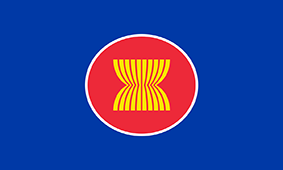
Asia polymers face more weakness as virus cuts demand

Polypropylene (PP) and polyethylene (PE) prices have steadily declined since the coronavirus outbreak worsened in January, and the search for a bottom continues.
Spot prices of linear low-density PE (LLDPE) film in China fell close to a 12-year low last week, while PP raffia prices slumped to a four-year low.
Argus assessed LLDPE film prices in China at $770-790/t cfr and PP raffia prices at $800-830/t cfr on 19 March.
The coronavirus outbreak is coming under control in China, with locally transmitted cases kept to a minimum in the past few days.
Workers in the petrochemical industry are slowly returning to their jobs and polymer plants in China are increasing production to 80-90pc, after weeks of reduced operations.
Inventories at state-controlled Sinopec and PetroChina edged up to 1.285mn t on 18 March from 1.27mn t a week earlier.
But social activities are being kept to a minimum and the economy is still weak, meaning downstream plastic demand – with the exception of hygienic products – is still slow.
Demand for woven bags, home appliances, construction materials and the packaging sectors in China continues to be heavily hit by the outbreak.
Petrochemical buyers remain deeply concerned about low crude oil prices, given their strong correlation with feedstock ethylene and propylene values.
Front-month Nymex crude futures closed at $23.36/bl yesterday, down by 62pc since the start of this year.
Southeast Asia, India buying weak
No uptick in spot prices is expected in southeast Asia amid a lack of demand in major importing nations such as Indonesia and Vietnam. Argus assessed LLDPE film prices in Vietnam at $800-820/t cfr and PP raffia prices at $880-900/t cfr on 19 March.
Polymers users in Association of Southeast Asian Nations (Asean) countries have started to seek domestic supplies if materials are promptly available at competitive prices. Asean producers were also among the first to offer PE cargoes into the southeast Asian market during the regular restocking cycle this week.
Price spreads between Asean-origin and other international PE offers have narrowed because of bearish sentiment, despite the preferential duty status given to Asean-origin supply. Buyers in southeast Asia have been expecting reductions in polymers prices because of cheaper feedstock naphtha, resulting in cautious transactions. Prices of naphtha hit a new low at $198/t cfr Japan on 23 March, according to Argus data, further weighing on buyers' sentiment.
Sentiment is also poor in India, a key producer and consumer of PE and PP, after the country imposed a lockdown to stem the coronavirus outbreak.
Indian converters are turning to locally produced polymers as the pandemic triggers a sharp drop in the rupee. The rupee was at 76 against the US dollar on 24 March – another all-time low.
The extremely bearish sentiment means Indian spot polymer prices are likely to remain stable-to-soft in the coming weeks, pressured by partial closures across the country.
LLDPE film prices in India were at $800-840/t cfr and PP raffia prices at $890-930/t cfr on 19 March, according to Argus data.
Supply disruptions
In the past, polymer turnarounds have often led to short-term supply shortages in Asia and almost instantaneous price hikes.
But significant PP and PE disruptions in March failed to exert much upward pressure on spot prices, given the weak demand in Asia.
South Korea's Lotte Chemical shut its 1.1mn t/yr ethylene cracker in Daesan after an explosion in early March.
Lotte Chemical operates 130,000 t/yr low-density PE (LDPE), 290,000 t/yr LLDPE and 500,000 t/yr PP units.
Malaysia's state-owned Petronas is likely to draw on its existing supplies of propylene and ethylene to continue running downstream polymer units after a fire hit its new Pengerang integrated complex on 15 March.
Pengerang, a joint venture between Petronas and Saudi Arabia's state-owned Saudi Aramco, can produce 750,000 t/yr of PE and 900,000 t/yr of PP.
Saudi Arabia's PetroRabigh shut its 700,000 t/yr PP, 600,000 t/yr LLDPE/high-density PE (HDPE) swing, 300,000 t/yr HDPE and 160,000 t/yr LDPE units in late February. The planned shutdown is scheduled to last until late April or early May.
By Muhamad Fadhil, Yee Ying Ang and China staff


Trump weighs using $2 billion in CHIPS Act funding for critical minerals

Codelco cuts 2025 copper forecast after El Teniente mine collapse

Electra converts debt, launches $30M raise to jumpstart stalled cobalt refinery

Barrick’s Reko Diq in line for $410M ADB backing

Abcourt readies Sleeping Giant mill to pour first gold since 2014

Nevada army depot to serve as base for first US strategic minerals stockpile

SQM boosts lithium supply plans as prices flick higher

Viridis unveils 200Mt initial reserve for Brazil rare earth project

Tailings could meet much of US critical mineral demand – study

Kyrgyzstan kicks off underground gold mining at Kumtor

Kyrgyzstan kicks off underground gold mining at Kumtor

KoBold Metals granted lithium exploration rights in Congo

Freeport Indonesia to wrap up Gresik plant repairs by early September

Energy Fuels soars on Vulcan Elements partnership

Northern Dynasty sticks to proposal in battle to lift Pebble mine veto

Giustra-backed mining firm teams up with informal miners in Colombia

Critical Metals signs agreement to supply rare earth to US government-funded facility

China extends rare earth controls to imported material

Galan Lithium proceeds with $13M financing for Argentina project

Kyrgyzstan kicks off underground gold mining at Kumtor

Freeport Indonesia to wrap up Gresik plant repairs by early September

Energy Fuels soars on Vulcan Elements partnership

Northern Dynasty sticks to proposal in battle to lift Pebble mine veto

Giustra-backed mining firm teams up with informal miners in Colombia

Critical Metals signs agreement to supply rare earth to US government-funded facility

China extends rare earth controls to imported material

Galan Lithium proceeds with $13M financing for Argentina project

Silver price touches $39 as market weighs rate cut outlook

















